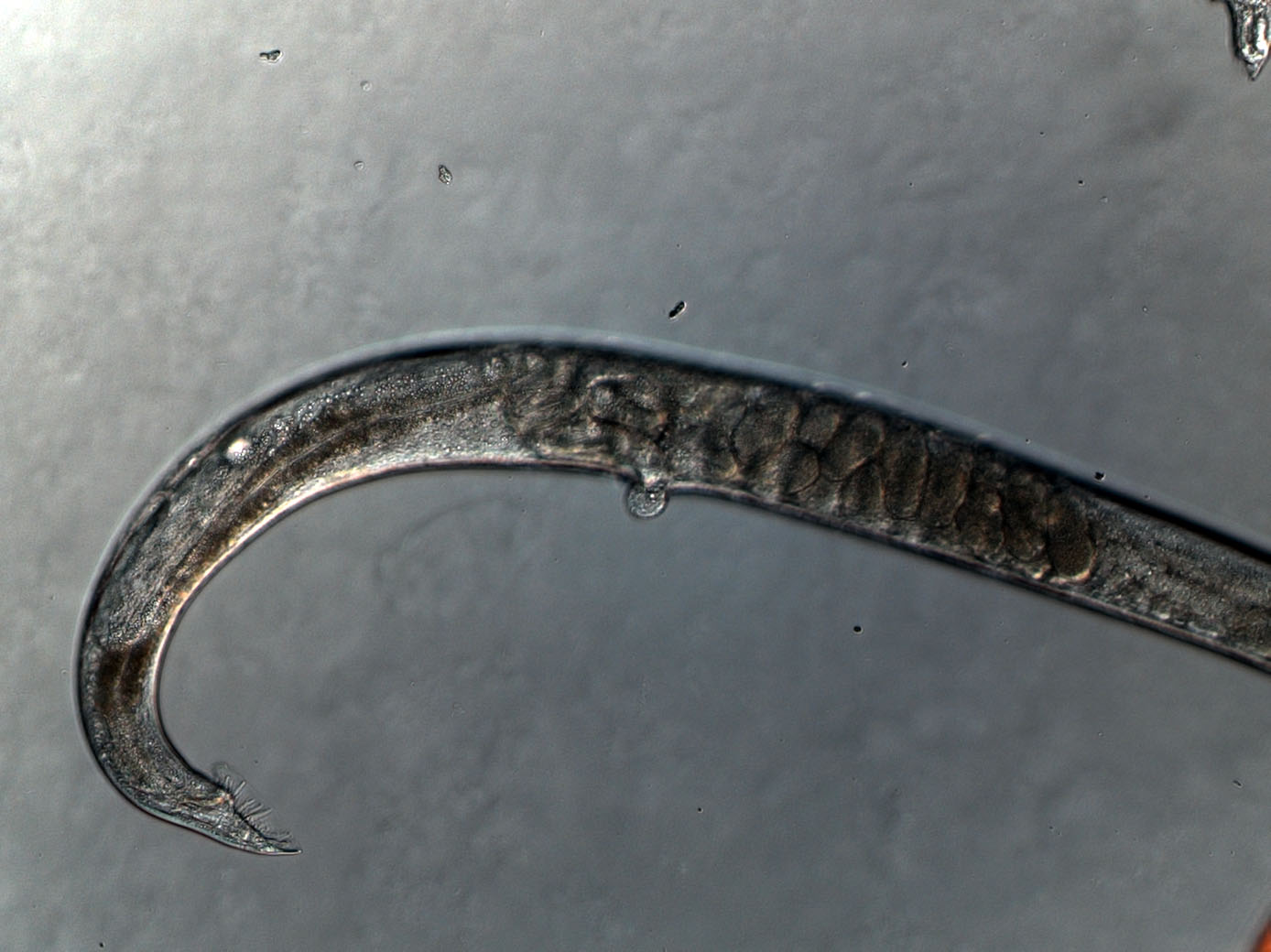Tinkering with worm sex to shed light on evolution
This post contributed by Nadine Lymn, ESA Director of Public Affairs
The roundworm Caenorhabditis elegans (C. elegans) is a tiny laboratory animal that researchers have worked with for decades. As a hermaphrodite, C. elegans makes both sperm and eggs and can reproduce by self-fertilization. In contrast to humans, where hermaphrodites are rare, for C. elegans, this is its normal state. However, male individuals, with only male gonads, can also occur and these individuals must mate with a hermaphrodite in order to reproduce, as shown in the video below.
A central question in evolution is how variations in the genes responsible for determining gender can exist since there seems to be so little room for error; if the mutation goes awry and negatively affects reproductive ability, a species could be in serious trouble.
A new paper published in the journal Evolution took a closer look. Michigan State University researchers Christopher Chandler and Ian Dworkin and colleagues at Iowa State University used worms that had already been mutated in previous experiments. One mutation determined that at a specific temperature, the larvae will become a hermaphrodite. At a higher specific temperature, the larvae—while still genetically a hermaphrodite—becomes a male, and at temperatures in between, intersex individuals arise, sporting both male and hermaphrodite characteristics. These intersex individuals are different from the normal, hermaphrodite C. elegans, in that they are truly mixed up—they have some characteristics of both the hermaphrodite and male versions of C. elegans. Chandler, Dworkin, and colleagues exposed the worms to the intermediate temperatures, creating populations of intersex individuals.
As described in a press release about the research, these characteristics made reproduction difficult, though still possible. Chandler and colleagues allowed these populations to reproduce for 50 generations, creating a strong selection for individuals still able to function sexually. Then the researchers measured the later generations’ sex ratio and fertility. They found that these later populations had more typical C. elegans sex ratios and higher fertility, despite the fact that they were still subjected to the intermediate temperatures that had rendered their predecessors intersex animals. As explained in the press release, other genes were evolving to compensate for changes in the sex determination genes, in a way that allowed individual worms to develop either as a male or a hermaphrodite, instead of as an intersex animal.
In other words, C. elegans was able to make up for the negative mutations brought out by the artificial conditions created by the researchers. In their paper’s conclusion, the authors note that their experiment, funded by the National Science Foundation, demonstrates that “organisms can accommodate deleterious developmental mutations on relatively short time scales” and that the mechanisms underlying these changes “may not be as predictable or repeatable as one might expect.”
At least in a lab setting, the worms were able to compensate for the negative mutations, and likely in more than one way.
Chandler, C., Chadderdon, G., Phillips, P., Dworkin, I., & Janzen, F. (2011). EXPERIMENTAL EVOLUTION OF THE CAENORHABDITIS ELEGANS SEX DETERMINATION PATHWAY Evolution DOI: 10.1111/j.1558-5646.2011.01420.x
